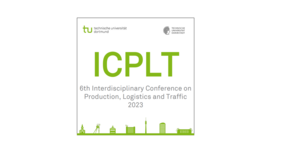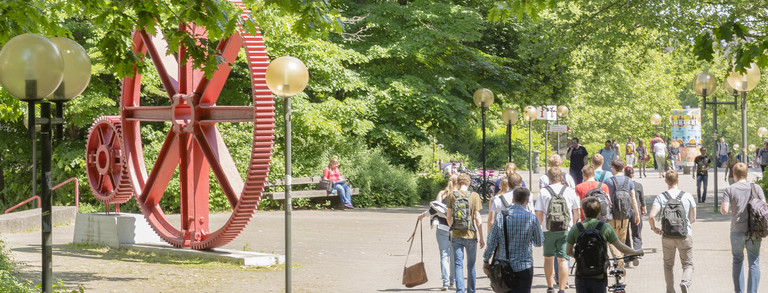Mathematical Optimization
Here you will find information on the different topics of Mathematical Optimisation.
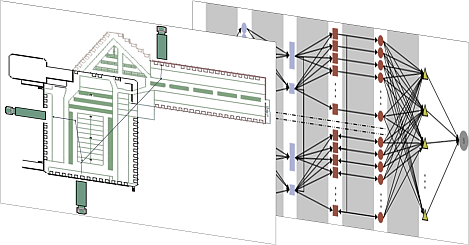
- Optimal gate assignment in logistics facilities (e.g., of LTL-carriers)
- Minimizing operational costs of internal processes (unloading, transfer, and loading)
- The exact assignment of tours and transport relations to inbound and outbound gates
- Modeling & Algorithms:
- Multicommodity flow models (with time slices)
- Column generation algorithms
- Scheduling-Heuristics
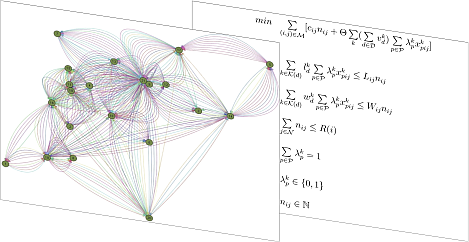
- Efficient consolidation and routing of transport flows in logistics networks (rail and road freight traffic)
- Optimization based on given network structures (customers, facilities, and hub locations)
- Consideration of real world transport costs (e.g., based on trucks or trains) and handling costs in logistics facilities
- Modeling & Algorithms:
- Multicommodity flow models (with time slices)
- Network design models
- Column generation algorithms
- Branch-and-price-and-cut algorithms
- Matheuristics
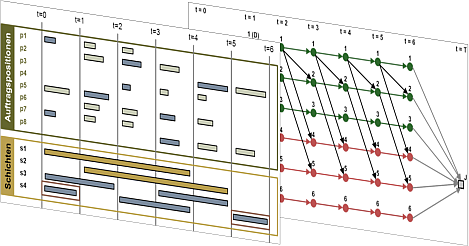
- Staff requirement planning and staff planning in logistics facilities (e.g., distribution centers)
- Crew scheduling and staff resource planning in the fields of transport, traffic, and waste management
- Integration of hard and soft factors in planning (e.g., costs, satisfaction of staff members, legal and operational rules & restrictions)
- Combination with planning or allocation of logistics resources (e.g., lift trucks, transport vehicles)
- Modeling & Algorithms:
- Set partitioning & set covering models with additional constraints
- Column generation algorithms
- Lagrange relaxation and subgradient optimization
- Resource constrained shortest path algorithms
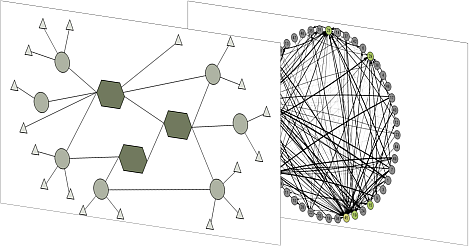
- Optimization of given network structures in rail and road freight traffic
- Planning of network structures („green field“) in rail freight traffic and road freight traffic
- Multi-stage network planning considering different location types, hub functions and capacities
- Consideration of real world transport costs (e.g., based on vehicles or trains) and handling costs in logistics facilities
- Modeling & Algorithms:
- Mixed integer network design and flow models (e.g., hub location)
- Multi-allocation-models (individual routing for each transport relation) including real world transport costs based on required vehicles
- Branch & bound, branch & cut, and column generation algorithms
- Problem specific heuristics
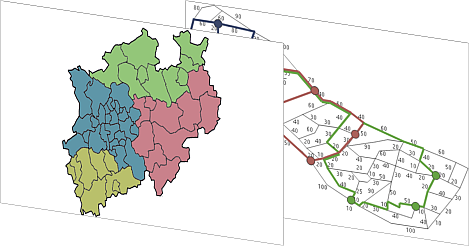
- Robust planning of groupage services via various pickup-and-delivery and vehicle routing problems
- Consideration of stochastic influences (e.g., uncertain driving times and customer demands)
- Minimization of required vehicles, operational costs, and arrival times
- Strategic route planning based on different scenarios and target performance comparison
- Modeling & Algorithms:
- Two-stage stochastic optimization models
- Savings-algorithms
- k-opt operators
- Scenario decomposition
- Evolutionary algorithms

- Mixed integer multicommodity flow models (with time slices)
- Mixed integer network design models
- Multi-allocation-models (individual routing for each transport relation) including real world transport costs based on required vehicles
- Two-stage stochastic optimization models
- Set partitioning & set covering models with additional constraints
- Lagrange relaxation & subgradient optimization
- Column generation algorithms
- Resource constrained shortest path algorithms
- Branch-and-price-and-cut algorithms
- Evolutionary algorithms
- Problem specific heuristics / Matheuristics
- Savings-algorithms & k-opt operators
- Scenario decomposition
Contact: Nele Pommerening, M.Sc.
Selected projects of the Mathematical Optimization division
02/14/2025
Multi Carrier Dispatch Planning with Artificial Intelligence
Using artificial intelligence (AI) to improve the decision-making basis for the shipping process and, building on this, to make better shipping…
08/14/2023
Development of a planning tool for the parking facilities of the Dortmund light rail lines
Development of a planning tool for the parking facilities of the Dortmund light rail lines
06/18/2023
Bi-level optimization for the planning of logistics service networks
Development of practical algorithms for the planning of logistics service networks using two-level optimisation methods
06/14/2020
Strategic network planning of seaport hinterland transport using gateways for consolidation of the LCL shipments
Development of a new type of network structure for transport, taking into account cost-efficient consolidation of LCL shipments
12/01/2016
Optimization of parcel delivery systems with the use of delivery robots
Optimization of parcel delivery systems with the use of delivery robots
03/24/2015
Integrated Planning in Public Transport
Coupling mathematical optimisation and stochastic simulation for robust, integrated circulation and service planning in public transport



